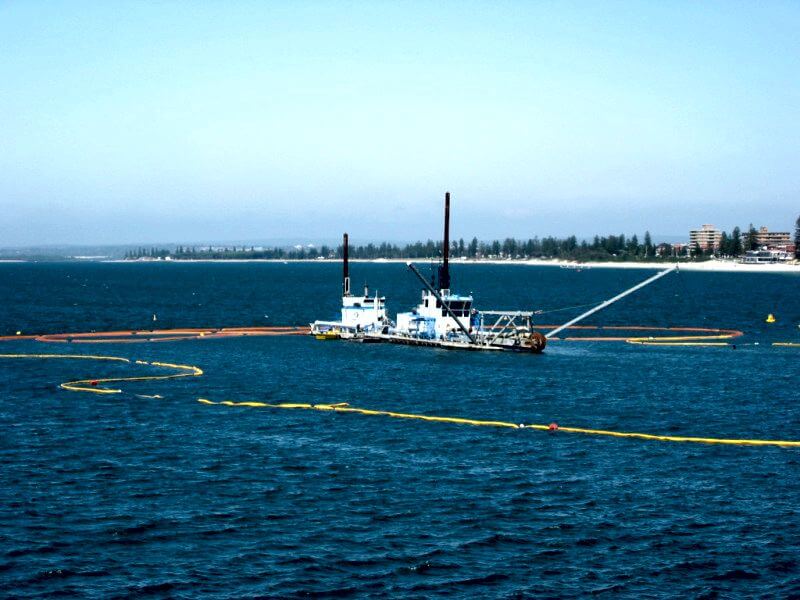Neumann Dredging: Balancing Ecology & Dredging Impact
Introduction:
At Neumann Dredging, we’ve always been passionate about the delicate balance between necessary dredging activities and preserving the environment. Dredging, a vital process for maintaining navigable waterways and enabling coastal development, comes with its share of ecological responsibilities. In this article, we explore the environmental impacts of dredging, guided by our years of experience and commitment to sustainable practices.
The Beneficial Side of Dredging:
- Restoring Natural Habitats: Our work often involves revitalising ecosystems affected by sediment accumulation. We’ve seen firsthand how carefully planned dredging can improve water quality and revive biodiversity.
- Flood Control Measures: As a frontline defence against the increasing threat of flooding, our dredging operations help maintain river depths, offering a safer environment for surrounding communities.
- Creating New Horizons: Our land reclamation projects demonstrate dredging’s role in responsibly creating new land for development, providing opportunities where land is scarce.
Addressing Environmental Challenges:
- Minimising Habitat Disturbance: We understand the importance of marine and riverine ecosystems. Our approach always includes measures to minimise disruptions to these precious environments.
- Managing Sediment with Care: Every project involves rigorous analysis of sediment composition, ensuring that any contaminants are appropriately handled and the impact on water quality is minimised.
- Reducing Noise and Disturbance: Our state-of-the-art equipment is designed to operate as quietly and efficiently as possible, lessening the impact on marine life.
Our Commitment to Sustainable Dredging:
- Innovative Techniques: We’re proud to adopt advanced dredging techniques, ensuring precision and reduced ecological footprint.
- Environmental Stewardship: For us, sediment management isn’t just a regulatory requirement; it’s a moral obligation. We strive to make informed decisions that respect the environment.
- Adhering to Standards: Compliance with environmental regulations is just the starting point. We aim to set the industry standard for environmentally responsible dredging.
Conclusion:
At Neumann Dredging, we recognise that our operations have a significant impact on the environment. It’s a responsibility we don’t take lightly. Our commitment to sustainable dredging practices reflects our dedication to the well-being of our waterways and ecosystems. We believe that through responsible dredging, we can continue to support development and protect our natural world for future generations.
“At Neumann Dredging, we’re not just navigating waters; we’re pioneering sustainable solutions to preserve our planet’s precious aquatic ecosystems.”
Ready to explore how responsible dredging can make a positive environmental impact? Join us at Neumann Dredging in our journey towards sustainable waterway management. Learn more about our innovative approaches and be a part of the change. Call us today to discover more.
FAQ
Dredging can have several environmental impacts. It can disturb aquatic habitats, displacing wildlife and altering the ecosystem. Dredging often stirs up sediments, which can release pollutants trapped in the sediment layers into the water column, affecting water quality. Additionally, the process can lead to increased turbidity, affecting light penetration and photosynthesis in aquatic plants. However, when managed correctly, dredging can also have positive impacts, such as improving water flow and reducing the risk of flooding.
At Neumann Dredging, minimising ecological disruption is a core part of our approach. We employ advanced, precise dredging techniques to reduce the physical disturbance of habitats. Our operations are planned and executed with detailed environmental assessments to ensure minimal impact on wildlife. We also use sediment screening processes to prevent the spread of contaminants and invest in quiet, efficient equipment to reduce noise pollution.
Neumann Dredging’s sustainable practices include using state-of-the-art, environmentally friendly equipment and methods that reduce sediment dispersion. We prioritise the reuse of dredged materials where possible, turning them into resources for land reclamation or construction. Our projects are governed by strict environmental regulations, and we conduct comprehensive impact assessments and mitigation strategies to ensure our operations are sustainable.
Dredging can play a significant role in ecosystem restoration. For instance, it can remove contaminated sediments from water bodies, thereby improving water quality and enabling aquatic life to thrive. In some cases, dredging is used to reshape water bodies in a way that supports habitat restoration, creating conditions that allow for the return of native plant and animal species.
To combat sediment pollution, Neumann Dredging implements rigorous sediment management strategies. This includes testing sediments for contaminants before dredging and selecting appropriate disposal methods, such as containment for contaminated materials. We also use silt curtains and other containment measures during dredging to prevent the spread of suspended sediments. Our commitment to continuous monitoring during and after the dredging process ensures that any potential pollution is addressed promptly.
